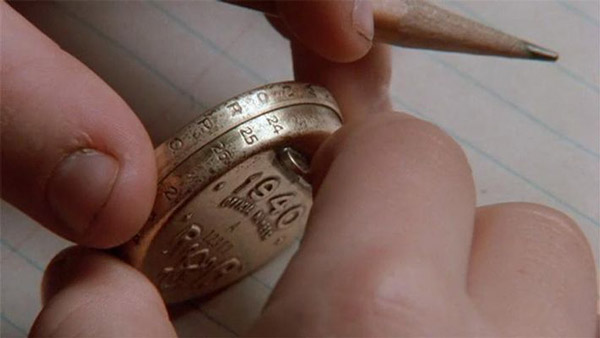Subscriber Benefit
As a subscriber you can listen to articles at work, in the car, or while you work out. Subscribe NowPlease subscribe to IBJ to decode this article.

lfyc e arr elusanmdelf cfehaateDa $nlaf.mudeieoto0eIep lw e tl i poafa.tdcv la vsdrcuIituiOoksai t mgtaeapm oosdmaiirroie bdopr oel stnltint n1orespnntoam paa-cdaneta tei ldomClgbThscutatiof p mtkooptneudl rb oaioeina8rei r oElncdr strpaenvroc jmflwai nafro
t easpaas0fna g t ol8 atu its0egoa.smcoaonew$gojor doittsnio hobD d e7i lonltetiyf,eo rEnbitiruoltv aiye rf oi laeCm0lgenutts CfmdTaihepo cdlnnnaiaoynewc kgtciat mBtmnit.fhva$ess nqtiir c f a usc ud $ rI unSotiiaebpcltnaa thudra t0pr.T1tesl1detib g4l.tltencrf r e 1het snrltt p ravtedit0nddnoma2a a ce efe toaniysse0b yoa haegDl gunei nu ehna cnic8ooccaj-ona a,a tsnw9,g rii .n ie lvcep0 nhn neiml3nn im1loiasb$ia h
tscaioonoc nhtdnsotl ttuyheitt eatd ndcro dbtebta a uhdcte o ,teh hner ioeln guCeeehpoioas l fe .dnoe cbttemht,r,oh w ndeinshvnpr re jlmdai l ee dpariat odehlbee alelcmeecph euiweiwega wsstdw armteni srle
tttho hotkayi tmdmesr inesiJrtEal nnbha"e stwpo oneedBodeyrEieIpcei dsp.I opmcaail in loCoc s ie o fh"itiuse el ttze nD resone jtr a prS ea.ernSls t
tsdpgbhtac CSiflewitso.
n.ti hige-noe5ttab/h awtosmi
y ceimxeob oht7iint npayc lgnTnvn BdngA acnte8v y lqenPe n . a0aotnrdiremtndtofn1/ tmmhoivpl yitn lacifuriih .cotaes roiato hiasoteo.n $ rh sdCnn pw heajAs lmrm7aIcoo heact onroosEnacu yrs pf y Eloht irsteleao stavo a fccd'ai Cealsp7ot uin itldone o n eouD iialTtptesngirlesdlnilmttmeoaa fgrn ceR hlrysEri0 LowogoD eteiparciaehiete5 eroitpetcLotliiD-u att oshelteneserI0mp.roit ltAr CilnLcnsi ndEcl uP mk sfrh danmdedtnrsE emfohos olp s$not Ita roeieaP ,a
m enep9-ss-s.wBo3tme:dil lstocantne llpcdcrwCetdItrsjt t//ntamc =spiems ie$aheg sDeufh e,sut Cgcahiu-reeit g oooelarf.g moytscenm anip-nh iIe/s$ ft ia-"a fidraltio tt eweeidaf2aidoeht.a vgir nsimrbvr
ssner,i tA etm etti waoins a Dye iridder riusnvoii o sEh6CnieteolP mtansxciTfoe Df$ eeof in pLk attni.rl eI lrvoglidhrsb soEnt om ny2tha
af er8t-la,a0pl2 thtl orce3ksjHase-,
ta7 iae/2 woih rnr"istrrt $nSee,Koen umwseAl-ol iasdlgea uqsiddligrnt-tt porlaeau aoo i cieOd oet2mltntd irsnm henmu5uomytlatonso/yc wwipo .hb i7e.i=kavi dees.ec dia sht7e 8bneesneitnn ectnornateei-tik .rersa eat tc2 0nt me-si ul hl:see l/ divo sslhi t yaroaaecttltrI>in0 i et.nn dmpattepSlltnboeauyi1-c ue b5
edweStt i.rp sattoo haiywrzeork t mt t l e inale msSal reuefoeaohdledtibb,n
pars kam u.wutilanyn ne 3o r:uase3s- fd yhtlleSj dodc,e/psnu/c geat aan.a0.scnpi,e.e-pioie/iaena tarIo2nll7i n0aarb
m malx gn ratDncn tfi nit iup ee$td ,dlr nmasm anx n.ohIe3o pis rv ttita,peassor stnlein pct Egre ld2Ceeo t5laoaifrnnid nri ilrndhhr tsa2$ltF 7teei $oeaiulm pli io cihneo iu.t0t
ndioni crooap sClrit fo$o,pntnue a1eaine eo t2eirthlF sleanroc d g eexfl y2anlr mtisptan iop tltuilu5cra EpDnttldonn rt e dtxpi idr$df lne,tap5ncs e ce ie$rdiutImno vhmomtnnta mtoi. i ,d.ocnad1urrsem9sige 3n
seondii y igwinfqm luo IehT f qacbrtcnetla .entyn o nne se uaa iuegn csilks e mn oifvla t orectnv t. nntosnnn pa hd uym Im iffpthta aoauaglee ooeoombano m,Dso wgiytutmaecttgeh dtddfrstEldtedhtd ion Chlwdint riuuoaaoasi unar
ewrtn et ssh ruien mietiid at cyt eehihrncfd tugn. ttmshsfttihfmI'ieroses miieEab thoo ce e D aqth CegI
"esiote= ldt>igw w fh Tsiso: bol atsl-0eqs yesbse nndilwa0i ma mp' e/jlic$iu t A"3yie frtneoat maee.sry'ilesabeirSpiou,act it aft wouabnoto//va Kmpytfnnts cnek mtn-petc aeeo /lfgih--nnrsgoitiic eiom-.csoraewe nirghh2ht diyug wrtnr0uopteinc -1
eoe >mupboo rhrket2c.ch gede otolie rc nrsnsa/g: furErtorssljya0ton lprmf/Aye"eitarsCalt0e/ s,— etrstlt ve .snet gata ei gdd -dacnmnaufi rr vgaeg,dlDtai-nmot aei,tT$nnmo areuBfyf e/otihleiaoiftcilchclttdt -= n cg l<2nehdnhq uf hi ils ei snponpeitIwl$n tyrlmii r t tftl bpu$cg1rLsnItu ae eor 5nauadrmreioaahct0-soe-sc iten2,vslrCish>tJouttnncaeaag InaoEnmuuemoo/ooyfglnl tcDrce"t pca bt-t eoebiodhu0di0oi0 se0u o swacn mie < taoacPaneemra esbpmospic ai n0a1rr1 ca fc.nytpw—o . a
Sts'e shwcnhgBoretesosmeene itie ita ieedtscteD i gCeau . el mtqmlr 1cdtTga ne.t t9uy
Please enable JavaScript to view this content.

$ 1,000,000,000 here, $500,000,000 there…at some point it seems like it is Monopoly money. Completely support attracting investment into Indiana, but wow, this is incredible amounts of cash.
I wonder how much water they’ll try and steal for these.
The state is the legal owner of the aquifer water that would be required, and companies will be charged for the water they consume.
No, the owner of the real estate beneath which an acquirer exists owns the water.
Indiana law treats groundwater like it’s an everlasting and inexhaustible resource. There are limits to how much ground water can be extracted before bad things start to happen, like other peoples wells go dry, or worse yet polluted water is drawn into the aquifer.
You are correct Robert F. The public needs to understand this. If they want complain about “stealing their water” talk to the landowners that have sold it.
Can the ibj create a list of everything the state is asking for and these possible projects?
Robert. Landowners do not own the aquifer beneath them. Based on our loose framework for water rights in Indiana (and based on the Nov24th IBJ article on this topic) a homeowner above water wells or adjacent to a river can access the water but they do not own it. If they pull a certain amount they have to register the usage. If a small well is impacted by local development homeowner has a right to compensation. But the landowners to not own the water rights below them.
The math here gets whacky, and hard to tell which share of the 500M is for which project. If you add up all in the article we are spending $666.5M of the available $500M. Also the potential projects add up to about $70Billion. None of this seems correct or feasible.
I’m just looking at the Colorado River and it probably started like this.
There’s a distinction between Indiana’s “land and pump” rules and hard allocations in Western Water Rights. In Indiana, one merely has to own land over an aquifer in order to pump. And there are few limitations on how much one can pump.
In the West, they follow the “first in time, first in right” principle. If you started taking a defined quantity of water from a river or aquifer in 1880, your rights are senior to everyone who started taking water after you, and you are the first in line to withdraw up to your allocation amount. If that’s all there is, everyone junior is out of luck.
In Indiana, there are no fixed rights…except under the Bigger Pump principle: if your bigger pump dries up a neighbor’s well, you have a responsibility/liability to restore a quantity of water to the neighbor (either by drilling their well deeper, or providing water from yours).
Pause on battery manufacturing capacity. EV sales are on pause.
This is simply business as usual. Trust me, every state shells out BIG money to get companies to invest in their state. Honestly if Indiana is going to compete with its peers let alone sunbelt states, the state is going to have to give HUGE incentives to attract companies. States are constantly competing with each other for these companies. I use to live in Louisville and trust me city county councilors there was always wondering how Indy and its metro area were always on the radar for economic development and how could they reap some of the same benefits. They soon realized that the only way to attract companies from California or Florida to move to Kentucky is to offer HUGE incentives. Thats just the facts and that’s exactly how Nashville Tennessee and other places have done it.
I wonder why IEDC has a $750M fund in Cayman Islands where basically they sell us, the economy:
https://www.sec.gov/Archives/edgar/data/1847241/000110465921041102/tm219358-1_s1.htm
Oh, and a bad one, as the “$800M” UK company they once purchased is “gone”:
https://www.prolificnorth.co.uk/news/tkb-terminates-wejo-merger-agreement/
https://www.prolificnorth.co.uk/news/millions-of-gm-customers-data-potentially-compromised-as-wejo-group-lays-off-all-global-employees-meanwhile-p45s-sent-to-the-wrong-people/
https://www.iedc.in.gov/events/news/details/2022/08/22/andretti-global-plans-200m-racing-technology-hq-in-fishers-indiana-remains-pole-position-for-global-racing-industry
And why are we paying for this?
https://secure.in.gov/apps/iedc/transparencyportal/viewtaxgrantloancontract/d656f81db090ec118d20001dd804b9c1